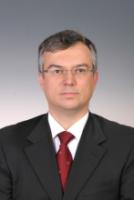
Full professor in the Department of Civil Engineering (DEC), University of Minho, Guimarães, Portugal, and coordinator of the Group of Historical and Masonry Structures. Co-head of the Institute in Sustainability and Innovation in Structural Engineering, with current contracted funding of $15 million and 150 PhD students. He supervised 50 PhD theses and is author of more than 1200 publications, with an h-index of 43. He is experienced in the fields of NDT, advanced experimental and numerical techniques, innovative strengthening techniques and earthquake engineering. He has worked as a consultant on several projects, including more than one hundred monuments in different countries and has been responsible for several R&D projects with the masonry industry. He was the recipient of the Scalzi Award from The Masonry Society in 2010 and he is currently a Getty Conservation Institute Scholar, researching historic masonry and earthquakes during his sabbatical.
Modern societies understand built cultural heritage as a landmark of culture and diversity. During the last decades, the idea that ancient buildings could be conserved and reused became appealing. Large investments have been concentrated in this field, leading to impressive developments in the areas of inspection, non-destructive testing, monitoring and structural analysis of historical constructions. These developments, and recent guidelines for reuse and conservation, allow for safer, economical and more adequate remedial measures. The presentation first addresses the issues of the methodology to adopt and selected cases studies, with a focus on earthquake engineering. For modern structural masonry, the use of unreinforced, confined and reinforced masonry is briefly addressed, discussing the influence of seismic hazard and presenting different solutions. Recent research on building systems for modern masonry structures is presented, together with conclusions on the performance of the systems for earthquake loading. The performance of masonry infills, with recent shaking table, is also presented. Finally, an overview of blast engineering of masonry structures is presented.
Amber Samaniego
a2samaniego@ucsd.edu
